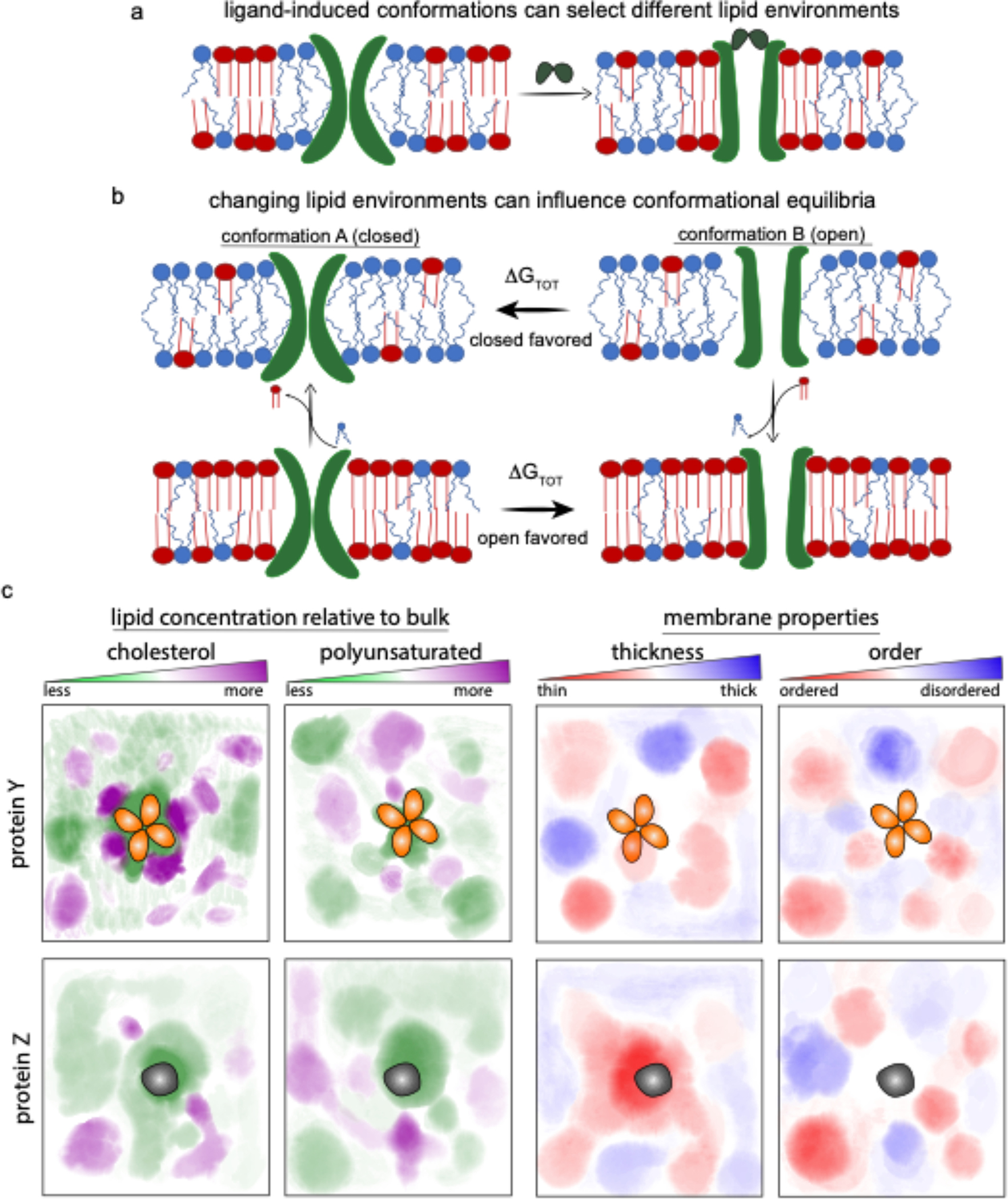Figure 6. The functional paralipidome.

(a) IMPs can prefer distinct lipid environments in different conformations. (b) Conversely, the conformational equilibrium of a protein is determined in part by the lipid environment. If the closed state of an ion channel (A) recruits unsaturated lipids (blue) into its paralipidome (top left), the open state will be favored in membranes rich unsaturated lipids (i.e. those in which the chemical activity of unsaturated lipids is higher; top panels). (bottom panels) Membranes rich in saturated lipids, which preferentially solvate or bind the open conformation (B), will tend to favor the open state. Importantly, these effects depend not on absolute compositions, but rather on chemical activities. For example, inclusion of other lipids (e.g. cholesterol) into the bulk may influence the chemical activity of saturated lipids and thereby change the conformational equilibria. (c) various IMPs have unique preferences of their local membrane nano-environment (i.e. membrane fingerprints), selecting both paralipidomes and consequent biophysical parameters based on subtleties of their conformation and dynamics.
